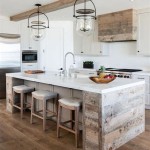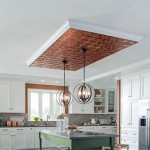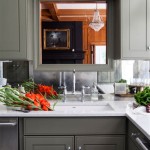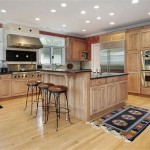D.R. Horton Kitchen Cabinet Suppliers: A Comprehensive Overview
D.R. Horton, Inc., stands as one of the largest homebuilders in the United States, constructing a vast array of residential properties across numerous states. The sheer volume of homes built annually necessitates a robust and reliable supply chain for all building materials, including kitchen cabinets. Understanding the landscape of D.R. Horton's kitchen cabinet suppliers is crucial for industry professionals, investors, and potentially even homeowners seeking replacement parts or understanding construction standards.
The company's approach to sourcing typically involves a mix of national-level agreements and regional or local partnerships. This strategy allows for economies of scale on widely used cabinet styles and materials while also accommodating regional preferences in design and construction. The specific suppliers used by D.R. Horton can vary based on location, prevailing market conditions, and the specific project being undertaken. Transparency regarding specific supplier names is often limited due to competitive reasons and contractual obligations.
Generally, D.R. Horton aims for a balance between cost-effectiveness, quality, and timely delivery when selecting its cabinet suppliers. This selection process typically involves rigorous vetting to ensure suppliers can meet the stringent demands of high-volume homebuilding, maintain consistent quality standards, and comply with all relevant building codes and environmental regulations.
The type of cabinets employed by D.R. Horton spans a range of styles and materials, reflecting the diversity of their housing offerings. From entry-level homes to more upscale properties, cabinet choices will vary considerably. Stock cabinets, known for their affordability and quick availability, are often utilized in many D.R. Horton homes. Semi-custom cabinets, which offer more design flexibility while remaining relatively cost-effective, may be featured in mid-range properties. Truly custom cabinets, though less common, might be incorporated into higher-end homes built by D.R. Horton or in specific upgrade packages offered to buyers.
Cabinet materials also vary, potentially including MDF (Medium-Density Fiberboard), particleboard, plywood, and solid wood. The choice of material often depends on the price point of the home, the desired aesthetic, and performance requirements. For example, MDF and particleboard are often used in the cabinet boxes due to their stability and affordability, while solid wood may be reserved for the cabinet doors and face frames to enhance the look and feel.
Factors Influencing Supplier Selection
Several factors heavily influence D.R. Horton's selection of kitchen cabinet suppliers. These extend beyond simply finding the cheapest option and incorporate a holistic view of the supply chain and the overall business objectives of the company.
Firstly,
cost competitiveness
is paramount. Given the number of homes D.R. Horton builds, even small differences in cabinet prices can translate into significant cost savings at scale. Suppliers must demonstrate an ability to offer competitive pricing without compromising on quality. This often involves streamlined manufacturing processes, efficient logistics, and strong relationships with raw material providers.Secondly,
production capacity and scalability
are crucial. D.R. Horton requires suppliers that can reliably meet its demands, even during periods of rapid growth or high construction activity. Suppliers must have the capacity to increase production volumes without experiencing significant delays or sacrificing quality. This may require significant investment in infrastructure, equipment, and personnel.Thirdly,
quality control and consistency
play a vital role. D.R. Horton maintains brand standards that necessitate a consistent level of quality across all its homes. Suppliers must have robust quality control processes in place to ensure that cabinets meet the required specifications and are free from defects. Regular inspections, testing, and adherence to industry standards are essential.Fourthly,
delivery reliability and logistics
are essential for maintaining project timelines. D.R. Horton operates on tight schedules, and delays in cabinet deliveries can disrupt the entire construction process. Suppliers must have efficient logistics capabilities to ensure that cabinets are delivered on time and in good condition to the various project sites. This may involve having strategically located distribution centers and a reliable transportation network.Fifthly,
adherence to environmental and ethical standards
is becoming increasingly important for D.R. Horton. Suppliers are expected to comply with all relevant environmental regulations and to operate in an ethical and socially responsible manner. This may involve using sustainable materials, minimizing waste, and ensuring fair labor practices.Types of Cabinet Styles and Materials Utilized
The kitchen cabinets installed by D.R. Horton exhibit a wide range of styles and materials, tailored to suit the different price points and aesthetic preferences of their various housing developments. This necessitates that their suppliers have the capability to provide a diverse range of products.
Cabinet Styles:
D.R. Horton commonly utilizes shaker-style cabinets due to their versatility and timeless appeal. Shaker cabinets, characterized by their simple, clean lines and recessed panel doors, can seamlessly integrate into a variety of design aesthetics, from traditional to contemporary. Flat-panel cabinets, which feature a slab door with no frame or embellishments, are another popular choice, particularly in modern and minimalist homes. Raised-panel cabinets, featuring a raised center panel surrounded by a decorative frame, are often found in more traditional or upscale homes. The selection of a particular style often depends on the overall design scheme of the home and the target demographic.Cabinet Materials:
As previously mentioned, the materials used in D.R. Horton's kitchen cabinets vary significantly. MDF (Medium-Density Fiberboard) is a common choice for cabinet boxes due to its stability, affordability, and smooth surface, which makes it ideal for painting or laminating. Particleboard, another cost-effective option, is sometimes used for cabinet boxes and shelves. Plywood, known for its strength and durability, is often used in higher-end cabinets or in areas where moisture resistance is a concern. Solid wood, such as maple, oak, or birch, is typically reserved for cabinet doors and face frames to enhance the aesthetic appeal and provide a more premium feel. The specific types of wood used will depend on the desired look and the price point of the cabinets. Laminates and thermofoils are also frequently employed as surface finishes, offering a durable and easy-to-clean alternative to painted or stained wood.Hardware and Accessories:
The hardware and accessories used in D.R. Horton's kitchen cabinets also vary depending on the price point and design aesthetic. Standard hardware, such as basic knobs and pulls, is often used in entry-level homes. Upgraded hardware, such as stainless steel pulls or decorative knobs, may be offered as an upgrade option or included in higher-end homes. Soft-close hinges and drawer slides are becoming increasingly common, even in lower-priced homes, as they enhance the user experience and add a touch of luxury. Other accessories, such as pull-out shelves, spice racks, and waste bins, may also be included or offered as upgrade options.The Impact of Market Trends on Supplier Relationships
The dynamic nature of the housing market and evolving consumer preferences exert a constant influence on D.R. Horton's relationships with its kitchen cabinet suppliers. Keeping abreast of these trends and adapting accordingly is crucial for maintaining a competitive edge and meeting the demands of homebuyers.
The increasing
focus on sustainability
is driving demand for eco-friendly cabinet materials and manufacturing processes. D.R. Horton is increasingly seeking suppliers that can provide cabinets made from sustainably harvested wood, recycled materials, and low-VOC finishes. This trend is not only driven by consumer demand but also by regulatory requirements and a growing awareness of environmental responsibility. Suppliers that can demonstrate a commitment to sustainability are more likely to be favored by D.R. Horton.Technological advancements
are also transforming the kitchen cabinet industry. Automation, computer-aided design (CAD), and 3D printing are enabling suppliers to produce cabinets more efficiently and with greater precision. D.R. Horton is likely to seek out suppliers that are embracing these technologies to improve their productivity, reduce costs, and enhance the quality of their products. The ability to customize cabinets and quickly respond to changing design trends is also becoming increasingly important.Evolving design preferences
are also influencing D.R. Horton's choice of cabinet suppliers. Homebuyers are increasingly seeking kitchens that are both functional and aesthetically pleasing. Open-concept kitchens, clean lines, and minimalist designs are becoming increasingly popular. D.R. Horton is likely to partner with suppliers that can offer a wide range of cabinet styles and finishes that cater to these evolving preferences. The ability to provide cabinets that complement the overall design of the home is crucial for attracting homebuyers.Supply chain disruptions
have become a significant challenge in recent years, highlighting the importance of resilient and diversified supply chains. D.R. Horton is likely to prioritize suppliers that have robust supply chain management practices and can mitigate the risk of disruptions. This may involve having multiple sources of supply, maintaining adequate inventory levels, and using technology to track and manage the flow of materials. Building strong relationships with key suppliers is also essential for ensuring a reliable supply of cabinets. This can lead to long-term strategic partnerships rather than purely transactional relationships.In conclusion, understanding the complexities of D.R. Horton's kitchen cabinet suppliers requires a comprehensive perspective, encompassing cost considerations, quality standards, production capacity, delivery reliability, and adherence to ethical and environmental principles. The company's sourcing strategies are continually evolving to adapt to changing market trends and consumer preferences, making it essential for suppliers to remain competitive and innovative. The selection process, while often opaque, is driven by a desire to balance affordability with quality, ensuring that the cabinets installed in D.R. Horton homes meet the expectations of homebuyers and contribute to the overall value and appeal of the properties.

Floor Plan In Pointe Park Union City Ga D R Horton

Floor Plan In West Hill Lawton Ok D R Horton

New Homes In Copper Hills Dr Horton Woodbury Mn D R

Available Home In Martin Farms Aberdeen Nc D R Horton

Custom Kitchen Cabinet Builder Modular Supplier Project

Whirlpool Corp To Provide Appliances D R Horton Homeowners Across U S Kitchen Bath Business

D R Horton Traditional Kitchen Denver By Housing Building Association Of Colorado Springs Houzz Ie

Available Home In Navarro Fields Seguin Tx D R Horton

Williamsburg Fate Tx Community By D R Horton Jome

New Homes In Harvest View Rogers Mn D R Horton








